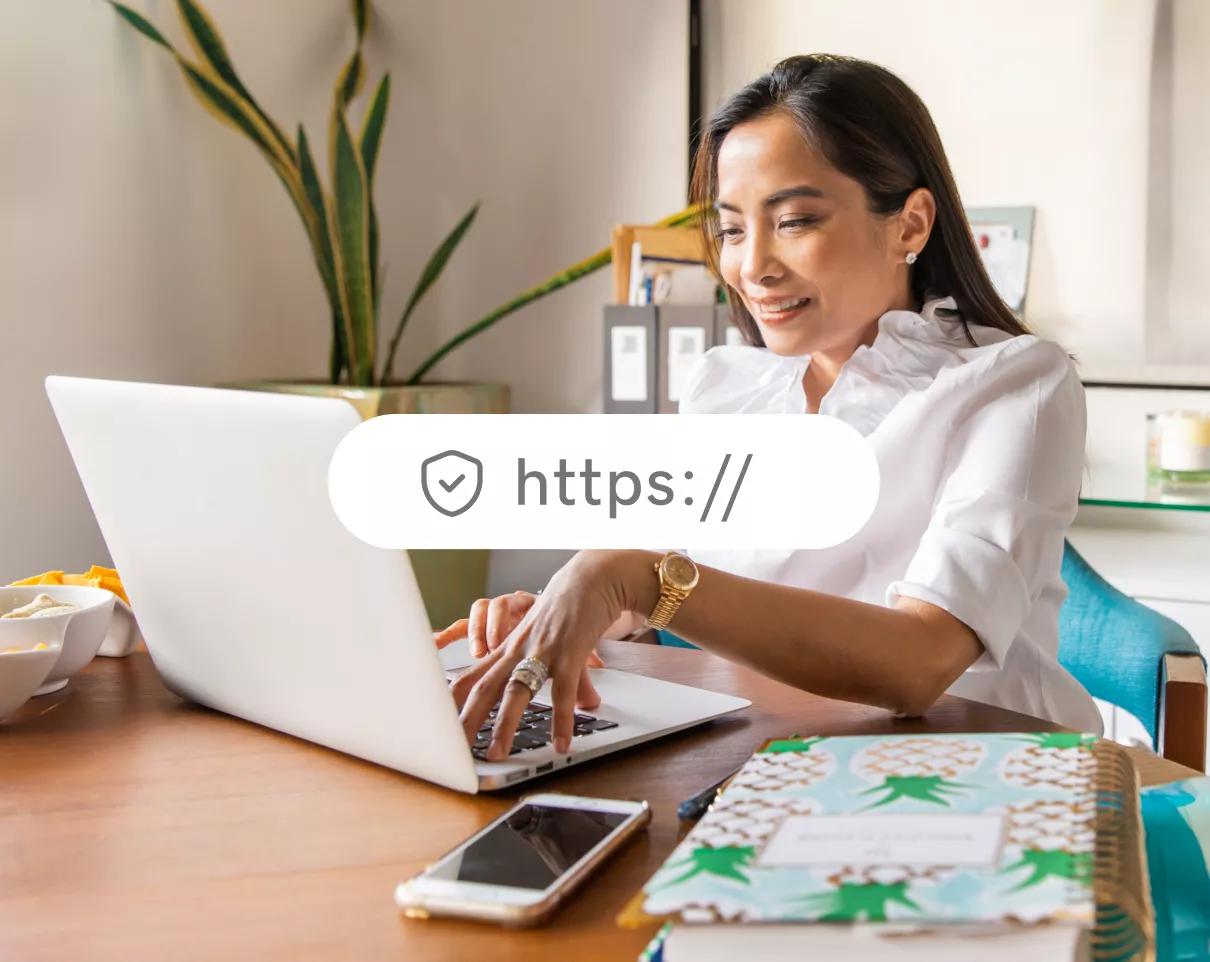
When you’ve got an SSL, you’re showing the world that your site’s legit and safe to visit. SSL certificates create a secure connection for customers to browse, shop and share their information (like credit card data and addresses) on your site.
Sites without them display a “Not Secure” warning in popular browsers like Chrome, Firefox and Safari when people visit — and 98%* of those people leave immediately after seeing that warning.

Know the differences between SSL certificates
Domain Validation (DV)
- Best for blogs and social websites.
- Validates domain ownership.
- Shows a trust indicator to signify authenticity.
Organization Validation (OV)
- Best for businesses and non-profits.
- Validates domain ownership and organization.
- Shows a trust indicator to signify authenticity.
Extended Validation (EV)
- Best for businesses and non-profits.
- Validates domain ownership and runs highest level of business authentication.
- Shows a trust indicator to signify authenticity.